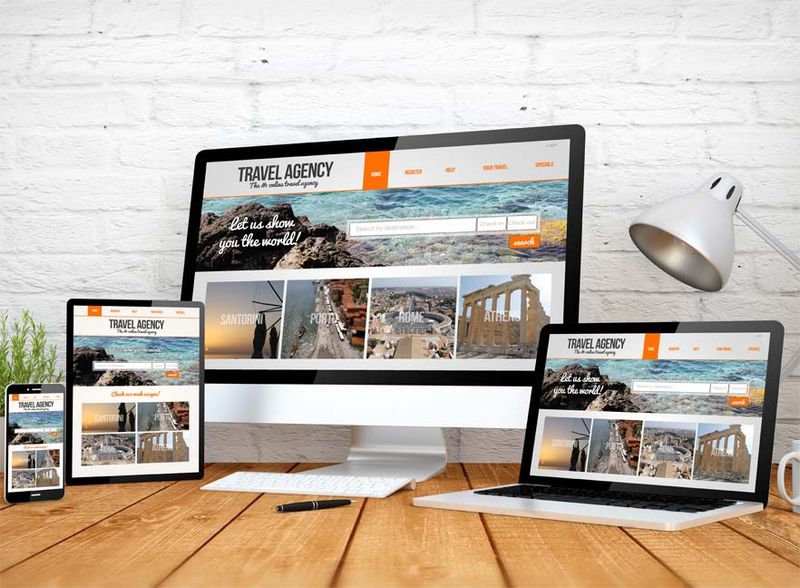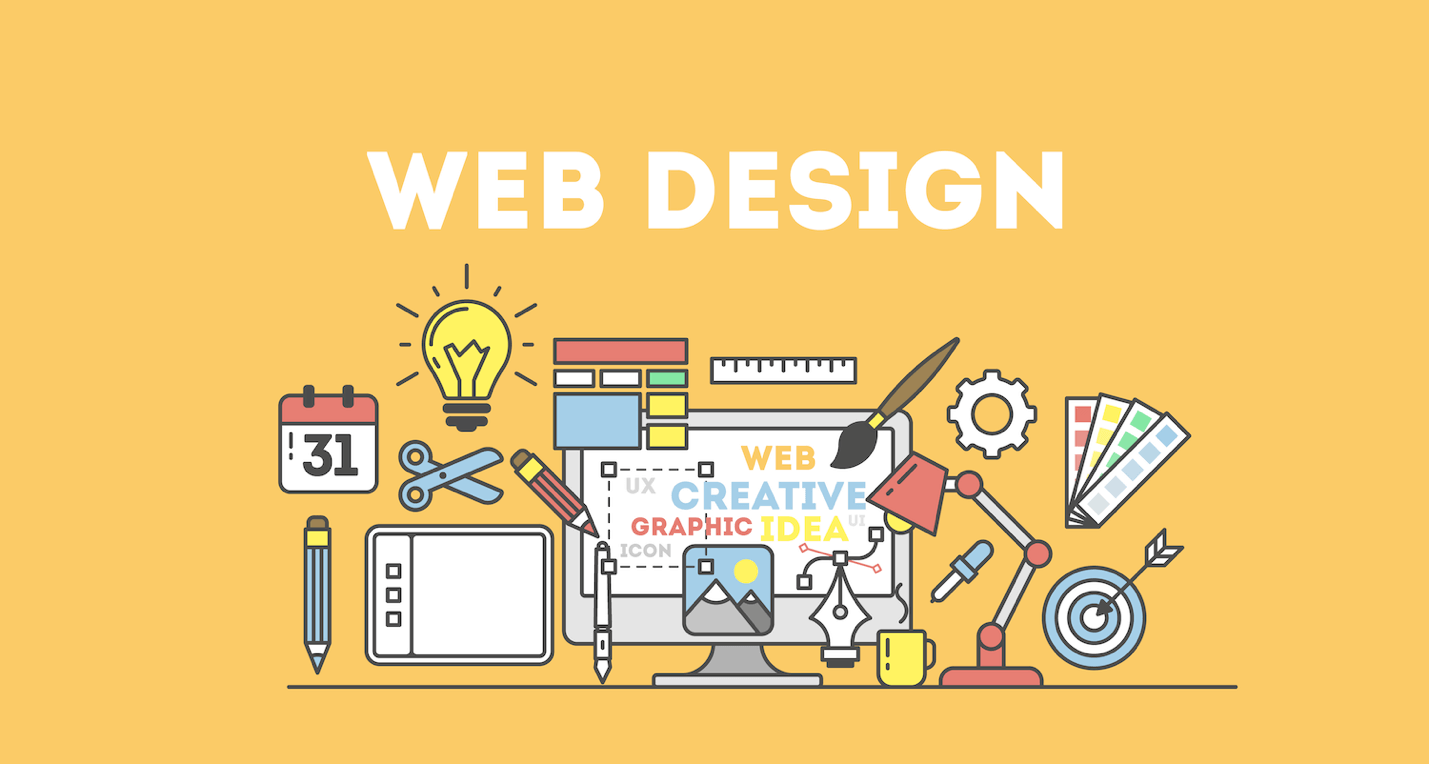Just How to Use Website Design Principles to Increase Your Site's Involvement
Prioritizing a seamless customer experience while making certain accessibility can significantly increase engagement. The strategic use of shade and typography more improves the customer's trip, producing an inviting and interactive atmosphere.
Enhancing Navigating Structure
A well-structured navigating system is critical for optimizing individual involvement and making certain a smooth browsing experience. It functions as the backbone of any kind of web site, guiding users with material efficiently while minimizing the cognitive lots connected with finding information. Efficient navigating design is not just concerning looks but entails a strategic arrangement of aspects that advertise accessibility and ease of usage.
To boost navigating framework, one should focus on simplicity and clarity. A chaotic food selection can overwhelm users, potentially driving them away. Categorizing content into user-friendly and sensible teams makes sure individuals locate what they are searching for with very little initiative. Executing a regular navigating plan throughout all pages promotes familiarity and encourages extended interaction.

Enhancing Mobile Responsiveness
With the boosting prevalence of mobile phones, enhancing mobile responsiveness is vital for maintaining individual engagement and complete satisfaction. As more users gain access to web sites by means of smart devices and tablets, ensuring your website is mobile-friendly is not just useful-- it's essential. A receptive layout immediately readjusts its layout and web content to fit any type of screen size, offering an optimum viewing experience across tools. This flexibility decreases the demand for zooming or horizontal scrolling, boosting functionality and keeping users on your website longer.
To accomplish mobile responsiveness, start by using flexible grids and designs. Use CSS media queries to ensure layout elements adapt to different screen dimensions. Focus on touch-friendly navigating by expanding switches and spacing web links effectively, lessening unintentional clicks. Furthermore, consider optimizing pictures and media to minimize lots times, which can considerably influence customer retention on mobile platforms.
A vital element of mobile responsiveness is making certain that material continues to be understandable and easily accessible. Use larger fonts and succinct text to boost readability on smaller displays (Fort Worth Local SEO). Consistently examining your site on different devices and web browsers aids fine-tune and identify prospective issues user experience. By focusing on mobile responsiveness, you satisfy a more comprehensive audience, ultimately increasing interaction and driving site success.
Crafting Engaging Visuals
Fascinating visuals are the keystone of engaging website design, seamlessly drawing users right into the site's narrative and improving their total experience. They give a prompt aesthetic impact that communicates the brand's identification and message, cultivating a connection between the content and the individual. To achieve this, visuals have to be thoughtfully crafted and purposefully positioned to guide users' attention without frustrating them.
High-quality images and graphics need to be made use of to create an aesthetically appealing setting that motivates expedition. This includes choose visuals that are websites not just aesthetically pleasing yet likewise relevant to the content, ensuring they add worth instead of offer as plain design. Including customized pictures or infographics can likewise improve understanding, as they simplify intricate info and make it much more digestible.
In addition, the assimilation of multimedia elements such as video clips and computer animations can even more enhance the user experience. These dynamic visuals record interest and can successfully show products or narrate stories, making the content extra memorable. It is critical to balance these aspects to keep a natural layout that supports the website's goals. By focusing on engaging visuals, web read this designers can considerably elevate user engagement, eventually leading to higher retention and conversion rates.
Making Use Of Strategic Shade Use
Incorporating shade strategically is a fundamental facet of website design that matches compelling visuals in exciting users. Shade not just improves looks yet additionally plays a vital duty in guiding individual actions, establishing brand identification, and evoking emotional feedbacks. By comprehending shade theory and psychology, web designers can create a engaging and unified individual experience that maintains visitor interest.
To utilize shade properly, take into consideration the emotional impact each tone might communicate. Blue typically represents trust fund and stability, making it ideal for economic or business websites. On the other hand, red can stimulate urgency or enjoyment, ideal available for sale or advertising web content. Consistency in shade combinations across an internet site aids solidify brand name acknowledgment and customer experience.
Comparison is one more important consideration. High comparison in between background and message shades boosts readability and ease of access, guaranteeing that content is easily absorbable for all customers. Accent colors can be strategically used to draw interest to essential aspects such as call-to-action switches or important alerts, boosting user interaction and conversion prices.
Inevitably, a well-thought-out color technique not only boosts aesthetic charm yet also substantially contributes to a website's general interaction, directing individuals intuitively through their on the internet journey.
Improving Typography Choices
Typography offers as the foundation of website design, profoundly affecting customer engagement and the total visual of a site. Reliable typography you could try these out boosts readability and fosters a seamless customer experience, motivating site visitors to check out content much more thoroughly. To optimize typography choices, web developers need to think about variables such as font style selection, dimension, line spacing, and shade contrast.
Sans-serif typefaces such as Arial and Helvetica supply contemporary clarity, while serif fonts like Times New Roman convey traditional professionalism and trust. Combining font styles can produce aesthetic pecking order, leading individuals' interest to key details.
Font style dimension and line spacing also play an essential role in readability. Usually, a minimum font dimension of 16 pixels is advised for body text to ensure simplicity of reviewing across gadgets. Adequate line spacing, usually 1.5 times the font style size, avoids text from showing up cramped.
Lastly, color comparison between text and background is essential for accessibility. Devices like the Internet Content Access Guidelines can assist verify that contrast levels meet suggested standards, ensuring web content is easily accessible to all customers.
Conclusion

As more users access web sites using tablet computers and smart devices, ensuring your website is mobile-friendly is not simply useful-- it's necessary. Regularly examining your site on various devices and browsers helps refine and recognize prospective issues user experience.Fascinating visuals are the cornerstone of involving internet layout, effortlessly attracting users into the website's story and enhancing their general experience.Typography serves as the backbone of internet design, profoundly influencing customer engagement and the total visual of a website.Integrating reliable web layout principles substantially enhances website interaction by concentrating on user experience and ease of access.